If you’ve noticed Suaiqi App on your system, you’re dealing with an aggressive piece of adware that’s part of a malware family that never seems to go away. Every day, new versions of this malware pop up, keeping it relevant and just as dangerous. It follows the same pattern as Tiaow VApp and Woiap WApp, sneaking onto systems through bundled software installers, pirated programs, and even mods for popular games like Minecraft and Roblox.
Once inside, Suaiqi App wastes no time flooding your screen with intrusive ads, deceptive pop-ups, and fake malware warnings, all designed to pressure you into downloading bogus security tools. Fall for the trick, and you could end up with even more malware on your device or the victim of some phishing scam page.

Getting rid of Suaiqi App isn’t always simple, especially if you’re not familiar with manual malware removal. That’s why we’ve put together a detailed guide to help you remove it completely. If you want a faster, safer option, SpyHunter 5 can handle the job automatically.
Suaiqi App Removal Tutorial
Let’s start simple. The following quick steps could be all that’s needed to rid you of the Suaiqi App malware. And even if they don’t wipe Suaiqi App off your system completely, they still lay the foundation for a successful removal. Skipping them will make the more advanced steps much harder later.
- First, open the Start Menu and search for “Apps & Features.” This will pull up a list of every installed program on your computer.
- To make your job easier, sort the list by installation date – newly added software is often the source of infections like this one.
- Now, scan through the programs carefully. Do you see anything suspicious? Suaiqi App, or something else with a bland name, an unfamiliar icon, or an application you don’t remember installing? If anything raises a red flag, uninstall it immediately.
- Follow the on-screen prompts to complete the removal, but don’t stop there.
- Some malware leaves behind hidden remnants in its installation folder, so track down where it was installed and manually delete any leftover files.
Once you’ve finished, restart your PC. If Suaiqi App is still making its presence known, it’s time to move on to more aggressive removal methods.
SUMMARY:
Important! Read Before Continuing
This guide is designed to be as user-friendly as possible, but let’s be honest – manually removing malware can be tricky. If you’re not completely comfortable following the steps below, or if you just want a quicker solution, you may want to consider using an automated malware removal tool.
One highly recommended tool for this job is SpyHunter 5, which is designed to detect and eliminate Suaiqi App and any other hidden malware that might have snuck onto your system. If you’d rather not take any risks, running a scan with SpyHunter 5 before continuing might be your best bet.
How to Remove the Suaiqi App Virus
Before you dive into the following removal steps, you need to prepare for them. Some of the Suaiqi App files that you’ll need to delete might be hidden or blocked by the malware, so you must first complete these two preparatory steps to be able to hunt down all rogue data:
Open the Start Menu, search for “Folder Options,” and go to the “View” tab. Look for the setting that says “Show hidden files, folders, and drives” and enable it. Click Apply, and just like that, the malware has lost one of its best hiding places.
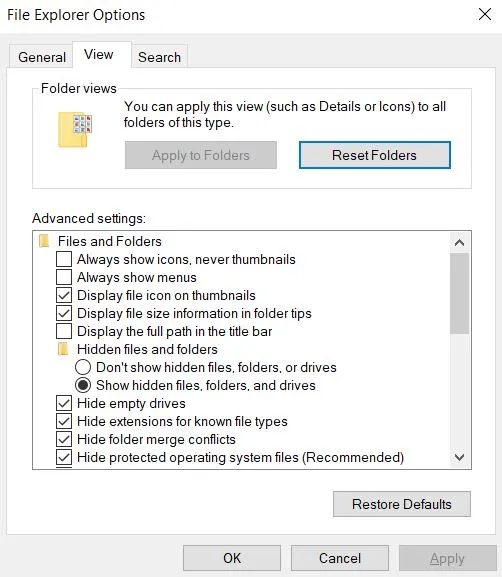
Next, download LockHunter, a free tool that lets you delete stubborn files that Windows may claim are “in use.” Many malware programs lock their files to prevent you from removing them manually. LockHunter gives you the power to unlock and erase them with ease.
With these settings and tools in place, you’re now ready to track down and eliminate any hidden traces of Suaiqi App.
Video walkthrough for this step:
Delete Suaiqi App Virus Files
Now you are ready to begin searching and deleting rogue files linked to the Suaiqi App malware. Those are likely to be found in multiple locations in your system, so look through each of the following directories carefully and eliminate anything that seems fishy.
- IMPORTANT!: If a file or folder can’t be deleted because it’s in use by another app, you can get around this with the help of LockHunter. Provided it’s already installed in your system, you just need to right-click the stubborn item and then select What’s locking this file/folder? > Delete.
Start by checking these locations:
- C:\Users\YourUsername\AppData\Roaming
- C:\ProgramData\Microsoft\Windows\Start Menu\Programs\Startup
- C:\Users\YourUsername\AppData\Roaming\Microsoft\Windows\Start Menu\Programs\Startup
Carefully inspect these folders. If you see anything oddly named, recently created, or something you don’t recognize, delete it immediately. Pay special attention for folders named “kruaoq competation corp” and “karolisliucveikis” as these names are related to the Suaiqi App virus.
Next, wipe out temporary files by navigating to C:\Users\YourUsername\AppData\Local\Temp. Select everything in the folder (Ctrl + A) and delete it all. These files are just temporary system junk, and many malware programs use this directory as a hiding place. Clearing it out is a smart, risk-free move.
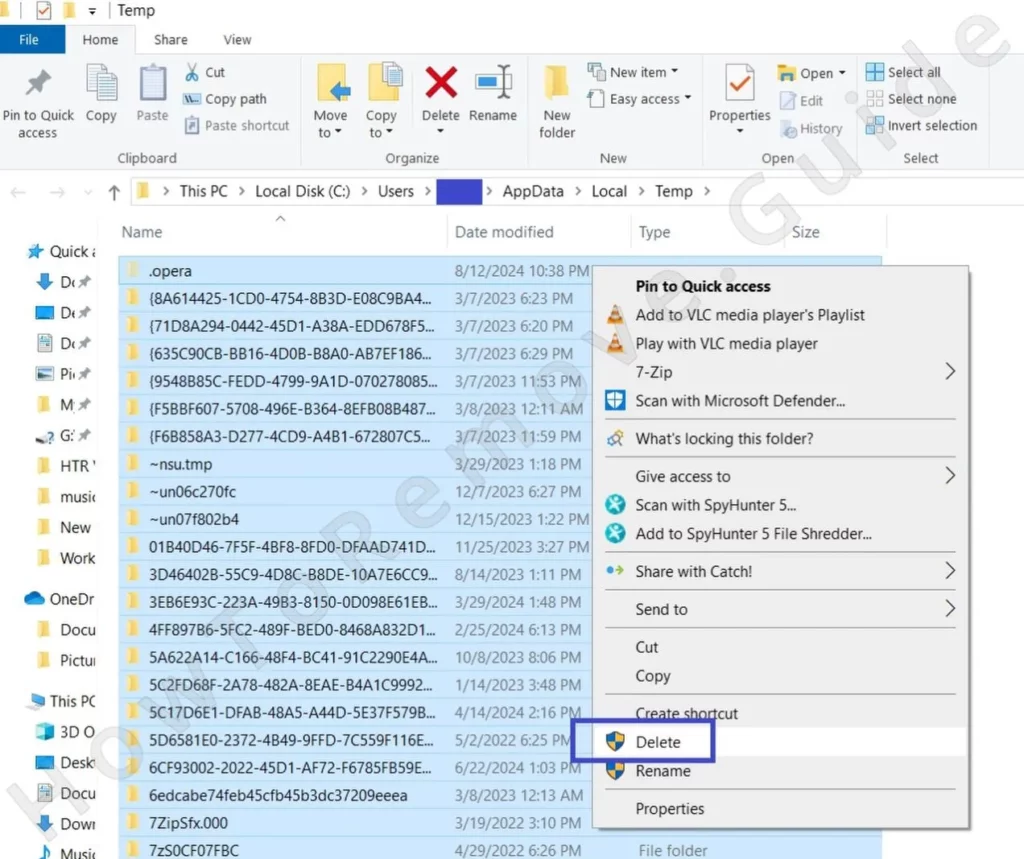
Now, open C:\Program Files and C:\Program Files (x86) – two locations where malware sometimes hides in plain sight. If you see any folders related to Suaiqi App, investigate them further. If you confirm they’re malicious, delete them immediately.
If any file refuses to be deleted, right-click it, select “What’s locking it?” in LockHunter, and force-delete it.
How to Delete Persistent Files with Lock Hunter
Get Rid of Suaiqi App Scheduled Tasks
A sneaky trick used by most malware is to create a rogue scheduled task (or tasks) in the system that allows it to launch automatically or even be reinstalled after the user seemingly deletes it. Therefore, to be sure Suaiqi App doesn’t come back after you delete it, be sure to check the tasks in your Task Scheduler.
Search for “Task Scheduler” in the Start Menu and open it. Go to the Task Scheduler Library, and examine every scheduled task.
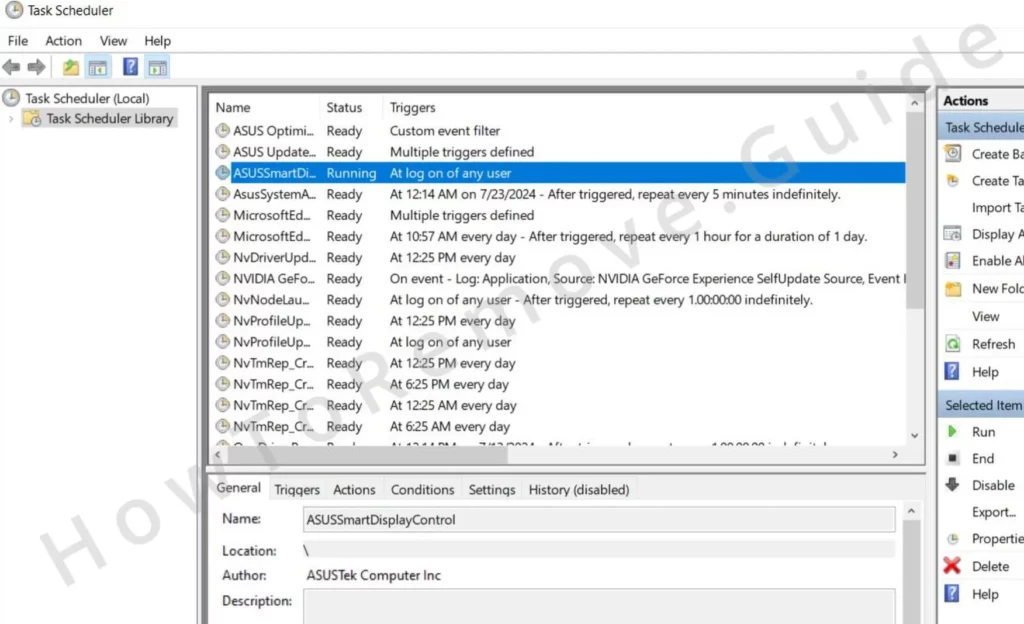
Click on each one and check its “Actions” tab. If you see a task pointing to a strange file location, an unknown website, or a suspicious script, delete it immediately.
Leaving even one of these tasks active could bring the malware back to life after a reboot, so be thorough.
Video walkthrough for this step:

Remove Suaiqi App Through the System Registry
Most of the Suaiqi App malware should be gone by now but you still need to perform a Registry cleanup because there are almost certainly remnants of the rogue app in there.
Be careful with this step – you will need to use your own discretion to choose what to delete, but if you delete something not related to the malware, this could cause problems in your system.
For this reason, for those of you who may have difficulties completing this step, I recommend letting SpyHunter 5 take care of this. For everyone else, here’s how to clean your Registry:
First, open “regedit” from the Start Menu and run it as an administrator. Use Ctrl + F to search for “Suaiqi App” and delete anything clearly linked to it. Run an additional search after each deleted item to ensure there’s nothing left.
Then also search for “kruaoq competation corp” and “karolisliucveikis”. Delete any found items.
Next, check the following locations in the Registry Editor manually:
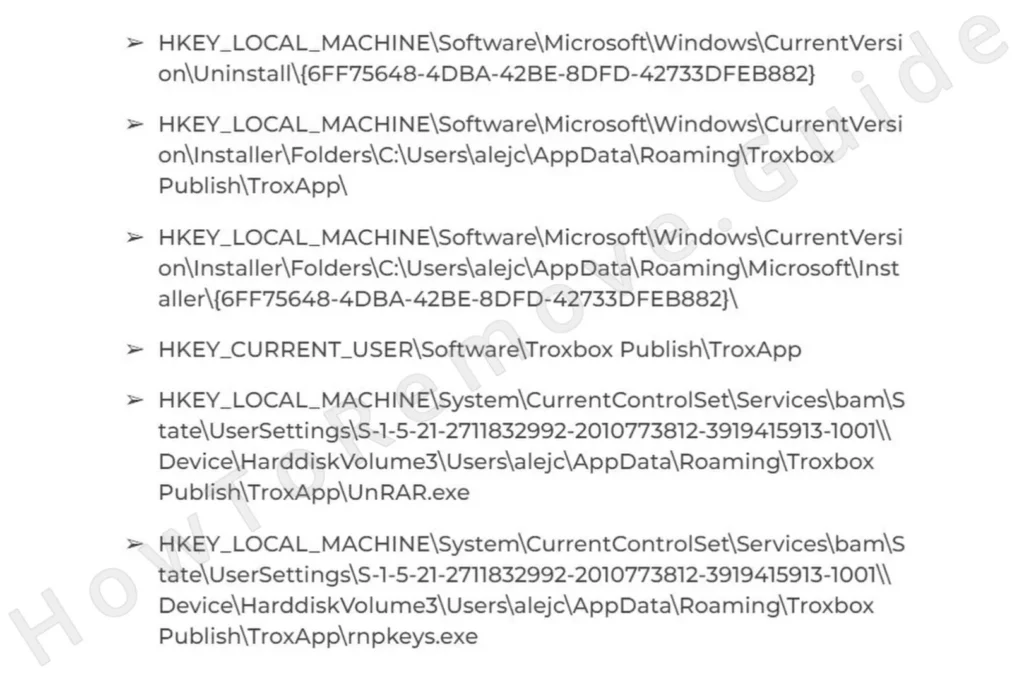
Here, only delete values related to Suaiqi App in the right panel – do not remove the registry keys in the left panel.
Video walkthrough for this step:
Remove Suaiqi App Browser Policies
Malware like Suaiqi App could also target your browser, make unwanted changes to its settings, and then block your access to them using a third-party policy to prevent you from changing them back.
If you see “Managed by your organization” in your browser settings, you need to remove the rogue policies.
Search for “Edit Group Policy” in the Start Menu and open the Group Policy Editor. Go to: Computer Configuration > Administrative Templates
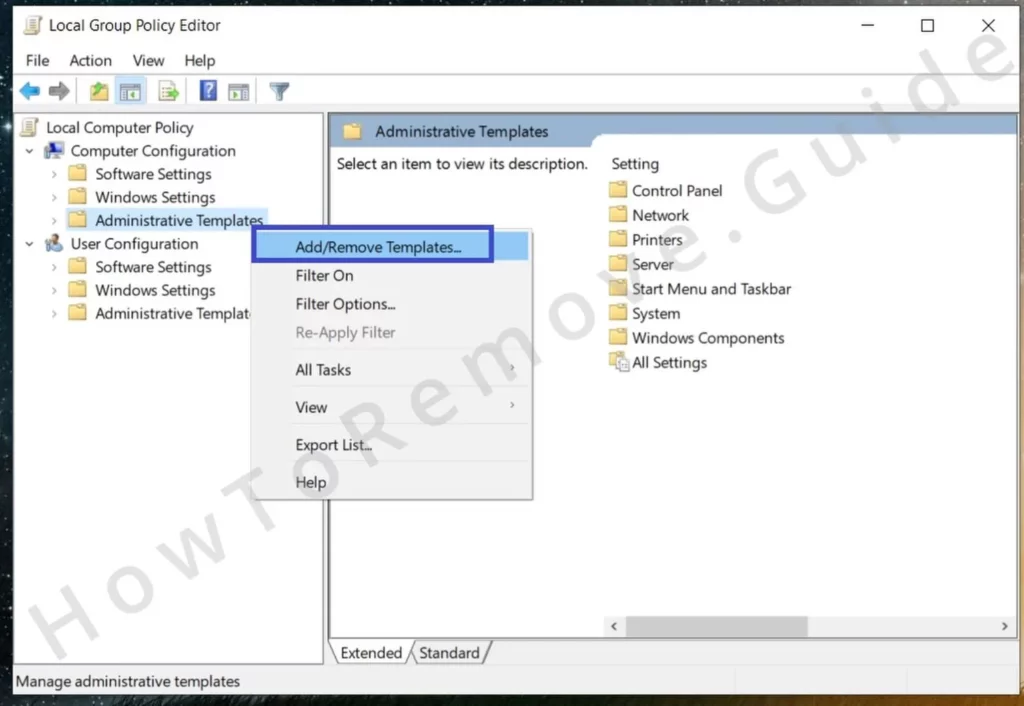
Right-click the settings panel, select “Add/Remove”, and delete everything.
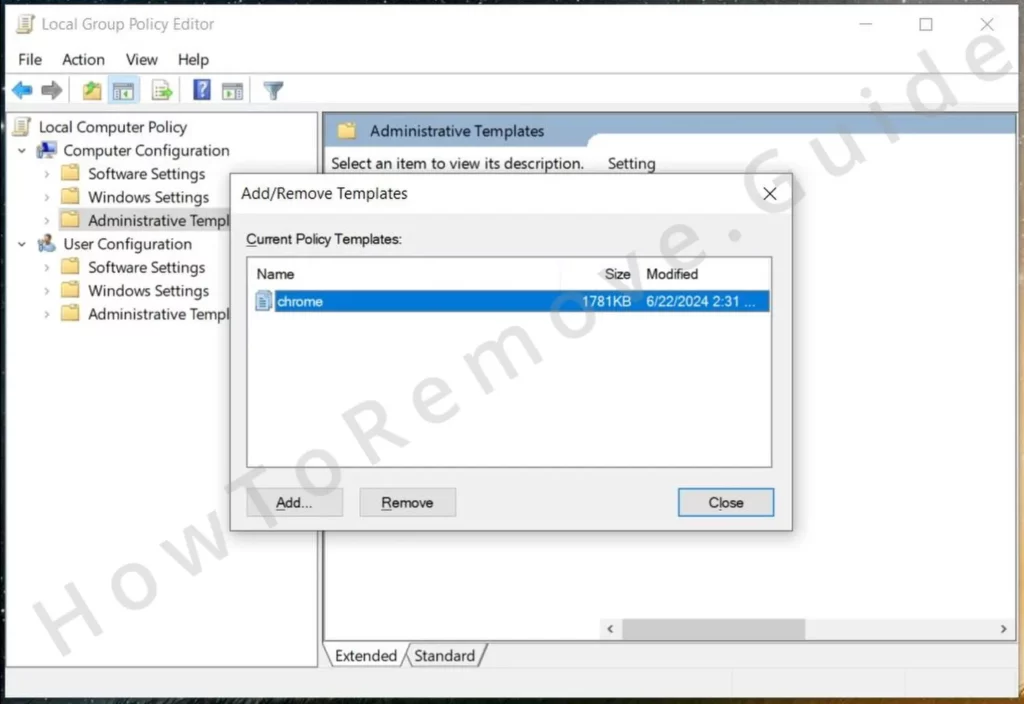
If you’re a Chrome user, you can make this easier by using Chrome Policy Remover – a tool that automatically resets browser policies. If Windows warns you about it, click “More Info” > “Run Anyway.” It’s completely safe.
ideo walkthrough for this step:
Manual Group Policy Removal
Automatic Group Policy Removal
Uninstall Suaiqi App From Your Browser
Now that your browser policies are back where they should be, it’s time to clean up the mess Suaiqi App might have left behind. Even if the malware itself is gone, some of its settings could still be lurking in your browser, keeping those annoying redirects and pop-ups alive. Let’s put an end to that.
First, open your browser’s extensions page and go through the list carefully. If you see anything you don’t remember installing, or an extension that looks out of place, remove it immediately. Malware loves to sneak in through add-ons, and leaving even one behind could keep the infection going.
Next, head to your Privacy and Security settings and clear out all browsing data. Set the time range to “All Time” and delete everything except your saved passwords. This ensures that no leftover tracking cookies, cached scripts, or malware-injected files continue to interfere with your browser.
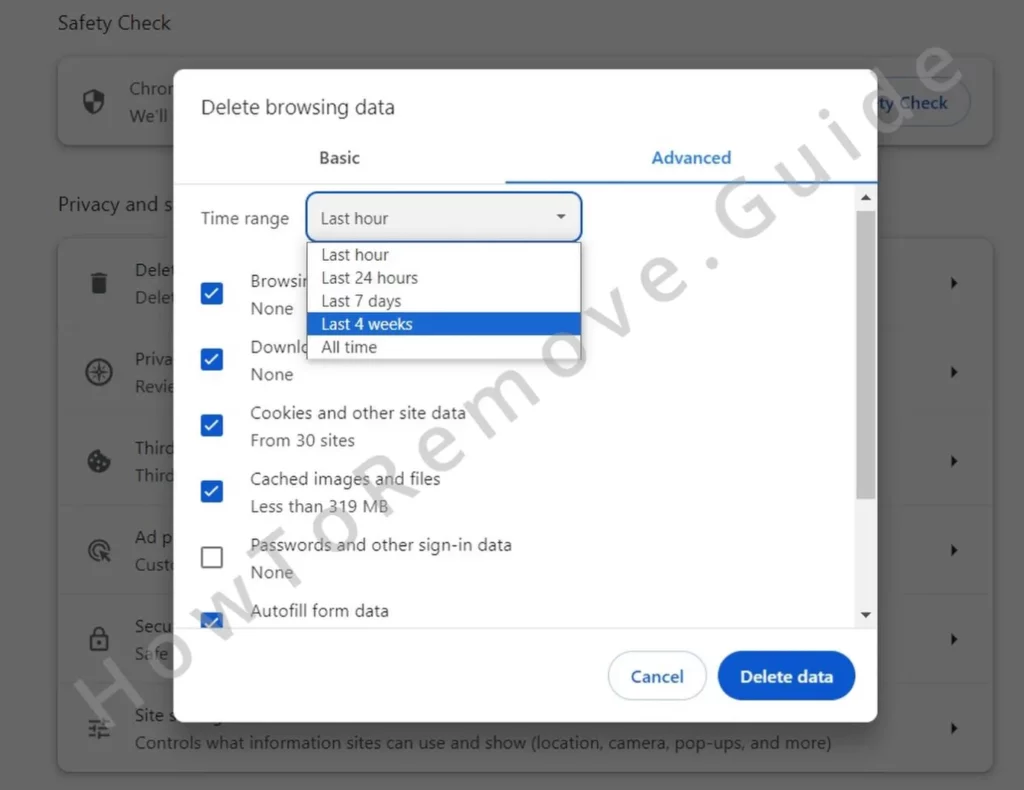
Now, check your Site Settings and look for any permissions that shouldn’t be there. If a shady site somehow has permission to send notifications or control pop-ups, revoke it. Suaiqi App may have tricked you into allowing access before, but now’s the time to take it back.
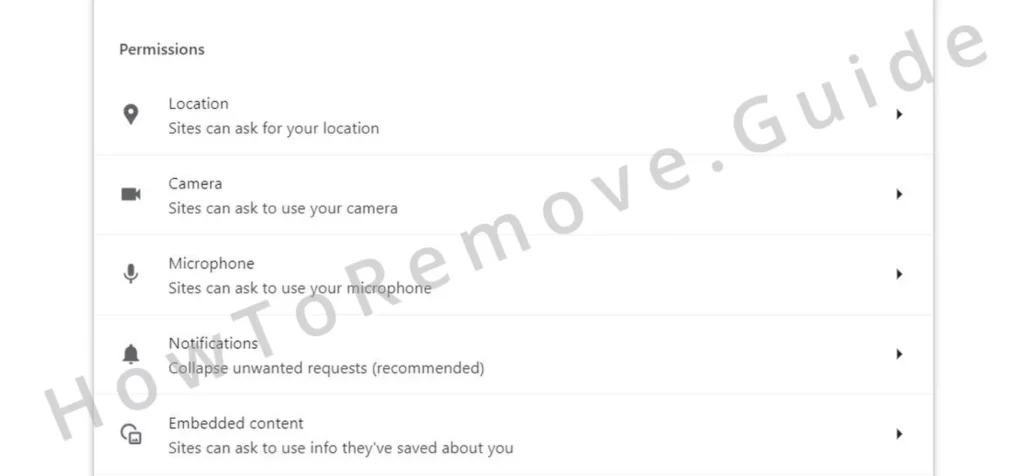
Finally, reset your default search engine, homepage, and startup pages. If anything looks off—maybe a search engine you’ve never heard of, or a homepage you didn’t set—it’s time to fix it. Remove anything suspicious, restore your preferred settings, and lock things down.
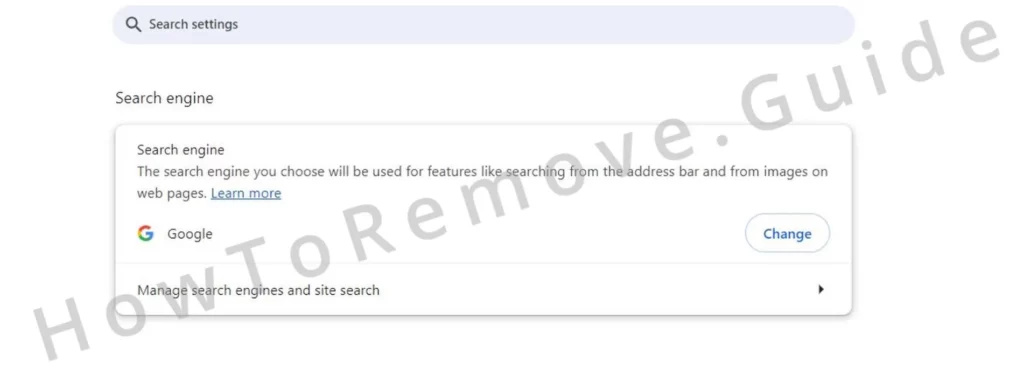
Once you’ve done all this, your browser should be back under your control—no more unwanted pop-ups, redirects, or strange behavior.
Video walkthrough for this step:
Chrome
Microsoft Edge
Mozilla Firefox
Final Thoughts: Keeping Your System Secure
If you’ve followed every step, Suaiqi App should be completely gone. But don’t stop there – make sure it never returns.
- Avoid shady downloads and always double-check software before installing it.
- Keep Windows Defender or another antivirus enabled.
- Never click on sketchy ads or pop-ups.
- Periodically check your installed programs and browser extensions.
For extra security, consider running SpyHunter 5 to detect any hidden threats that may still be lurking. Your system is now clean – keep it that way!
